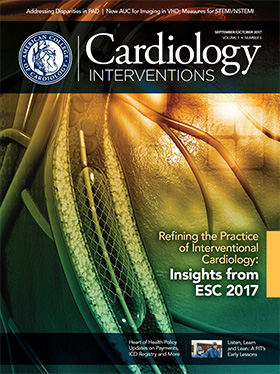Race was not independently associated with one-year mortality among black and white patients treated with PCI in Veterans Affairs (VA) hospitals, according to a study published in JAMA Cardiology.
They analyzed outcomes from January 2016 to April 2017 in 42,391 patients; 13.3 percent of the cohort was black. Most patients were male (98.4 percent) with a mean age of 65 years. Black patients tended to be younger, have lower socioeconomic status and live in urban areas, and have a higher burden of comorbidities and to be initially seen in the cardiac catheterization laboratory.
For the primary outcome of one-year mortality, in the unadjusted analysis, black patients compared with white patients had higher rates (7.1 vs. 5.9 percent; p < 0.001). They also had higher rates of the secondary outcomes of 30-day acute kidney injury (20.8 vs. 13.8 percent; p < 0.001), 30-day blood transfusion (3.4 vs. 2.7 percent; p < 0.01) and one-year readmission rates for myocardial infarction (3.3 vs. 2.7 percent; p = 0.01) compared with white patients.
However, in the analysis adjusted for demographics, comorbidities and procedural characteristics, there were no differences between black and white patients for one-year mortality. Except for a higher rate of adjusted 30-day acute kidney injury (odds ratio, 1.22), there was no difference in secondary outcomes between the unadjusted and adjusted analyses.
The study also found that black patients were less likely to receive a drug-eluting stent or to be prescribed beta-blockers, compared with white patients.
“This study represents the largest modern analysis to date of the influence of race on cardiovascular outcomes among U.S. veterans,” the study authors write. “A strength of the study is the ability to adjust for a wide range of confounders through the merging of clinical registry data with administrative claims.”
Kobayashi T, Glorioso TJ, Armstrong EJ, et al. JAMA Cardiol;July 19:[Epub ahead of print].
<<< Return to top





